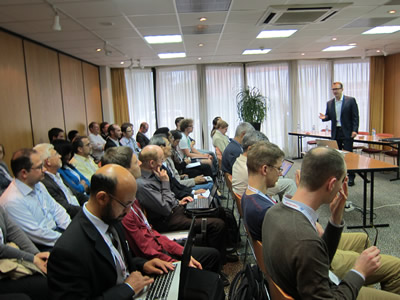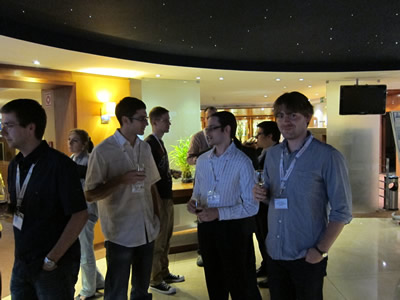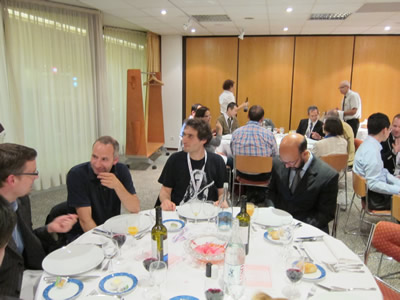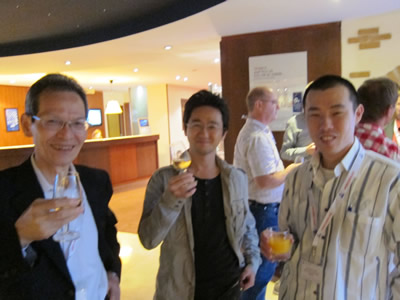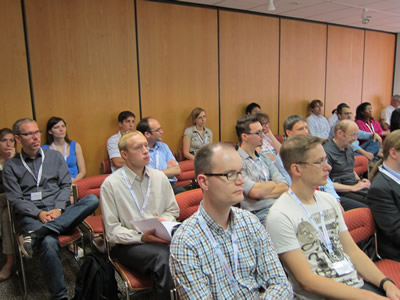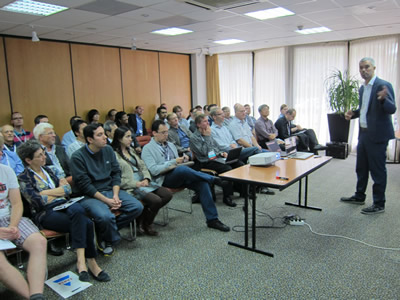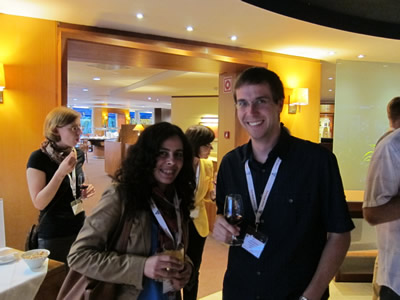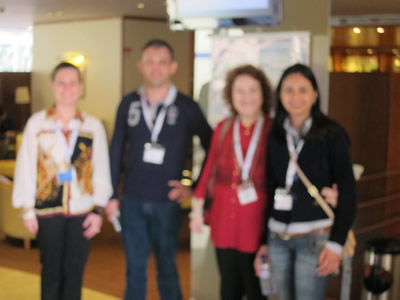SEMAPRO 2019 - The Thirteenth International Conference on Advances in Semantic Processing
September 22, 2019 - September 26, 2019
SEMAPRO 2019: Tutorials
T1. Analyzing the Enron Corpus with the Shell
Prof. Dr. Andreas Schmidt, Karlsruhe Institute of Technology & University of Applied Sciences, Karlsruhe, Germany
Description: The Enron dataset is a publicity available mass collection of over 600.000 real emails, from about 160 employees of the former Enron Corporation, acquired by the Federal Energy Regulatory Commission during its investigation after the company's collapse.
In the context of the tutorial, the dataset will be used as a real-world example to present the architectural pattern of stream-based data processing (called filters and pipes), originally suggested by Douglas McIllroy et al. The general idea is to utilize a bunch of useful programs (filters) that can be stick together using pipes (loose coupling). The most widespread implementation of this concept can be found in the form of shell commands on every UNIX computer. The idea of composing complex programs from small well defined components allows rapid prototyping, incremental iterations, and easy experimentation.
The most useful tools,e.g.cat, grep, tr, sed, awk, comm, uniq, join, split,etc. will be presented and the example of the enron dataset will be used to show how they can play together. The tutorial contains several practical exercises to be performed by the participants on their computers.
Keywords: UNIX Shell, Filters and Pipes, Data-Transformation
Audience: Software developers who want to know more about the software tools provided by their shell.
Prerequisites: Linux and Mac users have the required tools already installed on their computer. Windows users have to install cygwin (https://www.cygwin.com/) or the Linux-Subsystem of Windows 10.
T2. Challenges and Techniques in Drone Forensics
Dr. Hannan Azhar, Senior Lecturer, Canterbury Christ Church University, UK
Carrying capabilities of drones and their easy accessibility to public have led to an increase in crimes committed using drones in recent years. For this reason, the need for forensic analysis of drones captured from the crime scenes and the devices used for these drones is also paramount. After capturing the drone, a forensic analysis can provide a lot of information about the potential suspect of a crime based on the data gathered from on-board sensors and other electronics that assist with flight and navigation, as well as the camera and digital storage. Interpreting the flight data and tackling the multi-platform nature of drones are the major challenges in forensic analysis of drones. This talk presents the challenges and techniques in extraction and identification of important artefacts from the recorded flight data as well as the associated mobile devices to aid the analysis of two popular drone systems - the DJI Phantom 3 Professional and Parrot AR.Drone 2.0. Although different drones vary in their operations, this talk discuss the extraction and analysis of the data from the drones and associated devices using some generic methods which are forensically sound adhering to the Drone forensics Frame work and the guidelines of the Association of Chief Police Officers (ACPO).
T3. Industrial Security
Dr. Rainer Falk, Principal Key Expert, Siemens AG, Corporate Technology, Germany
Protection of industrial automation and control systems against intentional attacks is increasingly demanded by operators and also by regulation. Industrial security is called also Operation Technology security (OT Security) or industrial cyber security, to distinguish it from general IT security. Industrial systems have not only different security priorities compared to general IT systems, but come also with specific side conditions that prevent that security concepts established in the IT domain can be applied directly in an OT environment. For example, availability and integrity of an automation system have often a higher priority than confidentiality. High availability requirements, different organization processes (e.g., yearly maintenance windows), and required certifications may prevent the immediate installations of updates.
The industrial security standard IEC 62443 addresses the setup of a security organization and specifies technical security requirements for automation and control systems. With the increasing flexibility and openness, security has to cover the whole value chain and to support a flexible cooperation across security domains.
T4. Fast Track Introduction to Blockchain and Non-Currency Applications
John Kaldis, AIT - Athens Information Technology, Greece
The tutorial addresses in a concise manner a multitude of Blockchain concepts including:
- The Notion of Traditional Money and Structural Differences of Cryptocurrencies.
- Economic and Monetary View, Value vs Price, Exchange Rates and Deflationary Cryptocurrencies
- Transaction Description, Double Spending, Blocks, Lack of Trust, Digital Signatures and Wallets
- Nodes, Hashing, Merkle Trees, Mining, Proof of Work vs Proof of Stake
- Crypto 2.0, Ethereum, Smart Contracts, Build your own Crypto.
- Ripple, Notable Crypto Coins, Altcoins, Tokens, Forks
- ICOs, Funding Types, The DAO Case, Crypto Exchanges
- Regulatory Treatment around the world
- Distributed Ledger, Permissioned vs Permission-less
- Pros and Cons of Blockchains for Industrial and Non-Monetary applications
- Blockchain Applications on Real Estate, Voting, Web3.0, Banking, HealthCare, Security, Asset Management, Supply Chain, DRM, Industrial Shopfloor, Digital Automation
- Case Studies of H2020 FAREDGE




